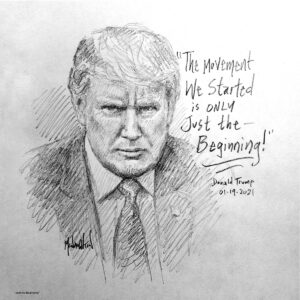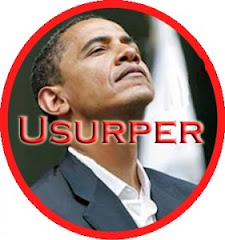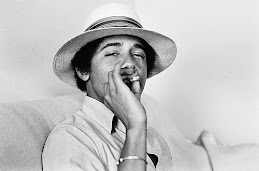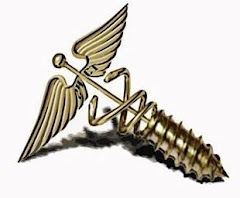Democrats have cynically dined out for years on the false narrative that President Trump was always trying to hold down Puerto Rico.READ MORE
Wednesday, July 24, 2019
Trump was right all along about Puerto Rico, with protests blowing apart Democrats' hurricane narrative
Labels:
American Thinker,
Donald Trump,
President,
Puerto Rico
Thursday, July 18, 2019
JIHAD SQUAD
Labels:
communism,
Congress,
Democratic Party,
Democrats,
Jihad,
Nazis,
socialism,
totalitarianism
Wednesday, July 17, 2019
Sundance: I have no doubt President Trump will cost the “Global Economy” $455 billion…. because that money will be transferring back to the America First economy.
"Name one individual who could take them on simultaneously and still be winning, bigly.
They say he’s one man. They say they have him outnumbered. Yet somehow, as unreal as it seems, he’s the one who appears to have them surrounded.
Incredible.
Lord knows we can’t spare this man."
Labels:
Donald Trump,
economy,
global,
President,
U.S. economy
Conservative comedian Evan Sayet: "The Leftists have taken the worst of every evil ideology the world has ever known and combined it to create the Democratic party."
EVAN SAYET:
Marxist socialists were sure that, if they could only control the money, they'd create a paradise on earth. Hitler's socialists were sure that, if they could only control race, they'd create a paradise on earth. The Islamicists are convinced that, if they can only control religion, they'll create a paradise on earth.
Because they are failed, ALL of them must control language.
The Democrats are convinced that, if they can only control all the money, races and religions, THEY'LL create a paradise on Earth.
They, too, desperately need to control what people are allowed to say.
Meanwhile, the CLOSEST man has ever come to paradise in all of human history is the nation that, in its very constitution, rejects government control of money (property), race (all men are created equal) and religion.
It is the one that specifically provides for freedom of speech.
The conservatives seek to conserve this constitution and do so through the Republican party. The Leftists have taken the worst of every evil ideology the world has ever known and combined it to create the Democratic party.
This truly is the ultimate battle in the war of good versus evil.
Labels:
2019,
comedian,
conservative,
Democratic Party,
Evan Sayet,
evil,
good versus evil,
leftists,
Republican Party
Saturday, July 13, 2019
Kamala Harris and Tulsi Gabbard Not Constitutionally Qualified To Be President or VP – Not a “natural born Citizen”
Harris and Gabbard Not Constitutionally Qualified To Be President – Not “natural born Citizens” by Attorney Larry Klayman – Founder of Judicial Watch and Freedom Watch | @ RenewAmerica.com – 12 July 2019
READ MORE:
CDR Kerchner (Ret)'s Blog
READ MORE:
CDR Kerchner (Ret)'s Blog
Labels:
2020,
candidates,
election,
eligibility,
Kamala Harris,
natural born citizen,
Tulsi Gabbard
Tuesday, July 09, 2019
WWII: Packard accepted the offer from Rolls-Royce and earnestly began preparations to build Merlins at their Detroit factory.
The Packard Merlin: How Detroit Mass-Produced Britain’s Hand-Built Powerhouse
 ROLLS-ROYCE-MANUFACTURED MERLINS WERE HAND-BUILT WHILE PACKARD AND FORD OF BRITAIN UTILIZED MASS-PRODUCTION TECHNIQUES. (PHOTO credit: Flickr user trainsnthings via Creative Commons)
ROLLS-ROYCE-MANUFACTURED MERLINS WERE HAND-BUILT WHILE PACKARD AND FORD OF BRITAIN UTILIZED MASS-PRODUCTION TECHNIQUES. (PHOTO credit: Flickr user trainsnthings via Creative Commons)
 THIS VINTAGE CUT-AWAY DRAWING PROVIDES A GLIMPSE INTO THE MERLIN’S COMPLEXITY. IT HAS MORE THAN 14,000 INDIVIDUAL PARTS
THIS VINTAGE CUT-AWAY DRAWING PROVIDES A GLIMPSE INTO THE MERLIN’S COMPLEXITY. IT HAS MORE THAN 14,000 INDIVIDUAL PARTS
 MATING THE MERLIN TO THE P-51 MUSTANG TRANSFORMED IT FROM A GOOD AIRPLANE INTO ONE OF WWII’S BEST. THE ENGINE’S HIGH-ALTITUDE PERFORMANCE WAS KEY TO ITS SUCCESS. (PHOTO BY LEE RAY, WWW.LEERAYPHOTOGRAPHY.COM)
MATING THE MERLIN TO THE P-51 MUSTANG TRANSFORMED IT FROM A GOOD AIRPLANE INTO ONE OF WWII’S BEST. THE ENGINE’S HIGH-ALTITUDE PERFORMANCE WAS KEY TO ITS SUCCESS. (PHOTO BY LEE RAY, WWW.LEERAYPHOTOGRAPHY.COM)
Few engines throughout history have achieved a near mythical status among its admirers. Fewer still can share credit for the rescue of an entire nation. Perhaps only the Rolls-Royce Merlin engine can claim both distinctions. During the Battle of Britain, it was the Merlin that powered the Royal Air Force Hurricanes and Spitfires that were England’s only effective defense against German air attacks. With the battle won, and the engine’s reputation thus established, the Merlin would become the stuff of legend and the power plant of choice for numerous other aircraft.
Even before the 1940 air battles over England, it was apparent that demand for the Merlin was far outpacing Rolls-Royce’s ability to produce them. The Ford Motor Company was asked to build 9,000 Merlins for both England and the US. Ford initially accepted the deal, but later reneged. Henry Ford explained that he would only produce military items for US defense. Interestingly, Ford of Britain in Manchester, England ultimately produced 36,000 Merlin engines, beginning at the same time period. Of course, Ford’s American factories would indeed become vital to the war effort. They manufactured unfathomable quantities of airplanes, jeeps and other war materiel--but not Merlins.
 ROLLS-ROYCE-MANUFACTURED MERLINS WERE HAND-BUILT WHILE PACKARD AND FORD OF BRITAIN UTILIZED MASS-PRODUCTION TECHNIQUES. (PHOTO credit: Flickr user trainsnthings via Creative Commons)
ROLLS-ROYCE-MANUFACTURED MERLINS WERE HAND-BUILT WHILE PACKARD AND FORD OF BRITAIN UTILIZED MASS-PRODUCTION TECHNIQUES. (PHOTO credit: Flickr user trainsnthings via Creative Commons)
Following Ford’s refusal to build the Merlin, a similar deal was presented to the Packard Motor Car Company. At that time, Packard automobiles were considered the “Rolls-Royce of America” by virtue of their luxury and quality. The company also had experience producing airplane engines and large V-12 power plants used in speedy PT Boats. Packard accepted the offer from Rolls-Royce and earnestly began preparations to build Merlins at their Detroit factory.
Two Countries Divided By A Common Language
There are many obvious challenges posed by producing a British-designed engine in America. Just the task of converting all of the measurements from metric imperial to US Standard units was daunting enough. This job was made even more difficult by the unprecedented complexity of the Merlin. The 1,649 cubic inch V-12 engine is comprised of more than 14,000 individual parts (knoll that!). It was, and still is, often called “a watchmaker’s nightmare.
Engineers at Packard soon discovered that Rolls-Royce did not design the Merlin for mass-production. The manufacturing tolerances were much looser than Packard’s standards. This was because Rolls-Royce had never implemented mass-production techniques to their assembly lines. Rather, they employed highly-trained “fitters” to assemble the engines. The fitters filed or otherwise massaged individual parts to achieve a precise fit. They even tightened critical bolts by trained feel, rather than with calibrated torque wrenches. In effect, each Rolls-Royce-manufactured Merlin was a hand-built engine that reflected the company’s traditions of premium quality and craftsmanship.
 THIS VINTAGE CUT-AWAY DRAWING PROVIDES A GLIMPSE INTO THE MERLIN’S COMPLEXITY. IT HAS MORE THAN 14,000 INDIVIDUAL PARTS
THIS VINTAGE CUT-AWAY DRAWING PROVIDES A GLIMPSE INTO THE MERLIN’S COMPLEXITY. IT HAS MORE THAN 14,000 INDIVIDUAL PARTS
While Rolls-Royce’s manufacturing techniques churned out very high quality engines, they simply didn’t jibe with Packard’s way of doing things (or Ford in Manchester for that matter). In his book “Not Much of An Engineer”, Rolls-Royce engineer Sir Stanley Hooker recalls his introduction to the matter with Ford:
“One day their Chief Engineer appeared in Lovesey’s office, which I was then sharing, and said, ‘You know, we can’t make the Merlin to these drawings.’
I replied loftily, ‘I suppose that is because the drawing tolerances are too difficult for you, and you can’t achieve the accuracy.’
‘On the contrary’ he replied, ‘the tolerances are far too wide for us.’ We make motor cars far more accurately than this. Every part on our car engines has to be interchangeable with the same part on any other engine, and hence all parts have to be made with extreme accuracy, far closer than you use. That is the only way we can achieve mass-production.’”
Like Ford, Packard was obligated to redraw all of the Merlin blueprints to satisfy their own manufacturing requirements. This effort took the better part of a year to complete and was closely coordinated with Rolls-Royce emissaries in Detroit. During the time that Packard was gearing up for production, Rolls-Royce was making continuous improvements to the Merlin based on feedback from the front lines. These updates also had to be incorporated into Packard’s operation. This continual two-way exchange of data took a heavy toll on the men tasked to manage it. Of the two original Rolls-Royce liaisons at Packard, one died during his tenure in Detroit and the other perished soon after his return to England.
Packard’s licensing agreement prevented them from implementing any changes to the design of the Merlin without approval from Rolls-Royce. There was an understandable need to maintain compatibility and consistent performance among the engines regardless of where they were manufactured. While Rolls-Royce engineers were typically attentive to suggestions from their manufacturing partners, any accepted design changes were applied across all production lines.
One area where the Americans contributed to the greatness of the Merlin was the crankshaft bearings. US aircraft engine manufacturers had determined that a silver-lead alloy with indium plating provided long wear and exceptional corrosion resistance. Thankfully, German engineers who evaluated captured American engines falsely deduced that the indium was merely an impurity. Packard shared the secret bearing formula with Rolls-Royce who incorporated it into the Merlin.
The Merlin became somewhat further Americanized by the components that were attached to Packard-built units. Carburetors, magnetos, spark plugs, and similar items were sourced through American vendors and sub-contractors, although they were still manufactured to British specifications.
To maintain compatibility, Packard did not convert any of the bolts, nuts, and studs to SAE dimensions. Rather, they were obligated to use fasteners with Whitworth threads, as specified by Rolls-Royce. Whitworth-form hardware proved impossible to source within the US, so Packard eventually produced all of the necessary fasteners in-house.
The first Packard-built Merlins emerged in August of 1941. As would be expected, there were a few teething problems such as excessive cylinder blow-by and oil leakage. Most historians agree that Packard and Rolls-Royce tackled the issues with a high degree of cooperation. The US-built engines soon performed on par with their English doppelgangers. Packard would ultimately manufacture 55,000 of the 150,000 Merlins that were built.
Unlocking the Merlin’s Greatness
Most of the Merlins built by Packard would find their way into P-51 Mustangs. This American fighter had an uninspiring start, mostly due to the poor high-altitude performance of its Allison V-1710 engine. Once mated to the Merlin, however, the P-51 would be considered among the best aircraft of the war.
 MATING THE MERLIN TO THE P-51 MUSTANG TRANSFORMED IT FROM A GOOD AIRPLANE INTO ONE OF WWII’S BEST. THE ENGINE’S HIGH-ALTITUDE PERFORMANCE WAS KEY TO ITS SUCCESS. (PHOTO BY LEE RAY, WWW.LEERAYPHOTOGRAPHY.COM)
MATING THE MERLIN TO THE P-51 MUSTANG TRANSFORMED IT FROM A GOOD AIRPLANE INTO ONE OF WWII’S BEST. THE ENGINE’S HIGH-ALTITUDE PERFORMANCE WAS KEY TO ITS SUCCESS. (PHOTO BY LEE RAY, WWW.LEERAYPHOTOGRAPHY.COM)
The exceptional high altitude performance of the Merlin was due to its two-stage, two-speed supercharger (a development introduced in 1941). This complex device allowed the Merlin to produce the same output power (about 1300 horsepower) whether it was on the ground or in the rarefied air at 30,000+ feet of altitude. Comparable single-stage superchargers of the time often peaked at less than 20,000 feet.
The exceptional high altitude performance of the Merlin was due to its two-stage, two-speed supercharger.
A supercharger works by compressing the fuel/air mixture from the carburetor to sea-level pressure (or higher). So even when the air gets thin, the engine receives the same mass of fuel and oxygen to burn. The Ideal Gas Law tells us that when you compress a gas, you also heat it. The Merlin’s two-stage supercharger actually compresses it twice. If left unchecked, heat from the extreme compression would cause poor performance and/or premature detonation of the volatile mixture. To address this, the Merlin uses an independent liquid cooling system to chill the fuel/air mixture following each stage of compression. The additional complexity of this intercooler/aftercooler system is far outweighed by the performance gains it provides.
The Inevitable Debates
Any mention of the Packard Merlin near an airport hangar or an internet forum is bound to instigate at least one of two worn out comparisons: the Rolls-Royce-built Merlin versus the Packard version, and the Merlin versus the Allison V-1710.
The comparisons of Rolls-Royce and Packard are typically rooted in national pride and false assumptions. As mentioned earlier, there was a tremendous effort by Rolls-Royce, Packard, and Ford of Britain, to make the Merlin fleet homogenous. Although each manufacturer may have employed unique production techniques, every engine had to meet the same specifications, and prove so on the test stand.
The problem with most arguments touting the superiority of either manufacturer is that any supporting data typically compares different versions of the Merlin…of which there were many. The same basic engine that made 1,000 horsepower in 1939 (with a single-stage supercharger), was capable of more than 2,000 horsepower by the end of the war just six years later. Additionally, the Merlin was produced for several different types of aircraft (fighters, bombers, & airliners) with specific gearing and supercharger configurations for each type. Apples-to-apples comparisons are difficult to come by.
My favorite story of Rolls-Royce’s faith in Packard comes from Bill Lear Jr’s book, “Fly Fast…Sin Boldly – Flying, Spying & Surviving”. In 1963, Lear was living in Geneva, Switzerland and flying a surplus P-51. After numerous problems with the starter clutch on his Packard-built Merlin, he contacted Rolls-Royce. They instructed Lear to send them the clutch, which was quickly repaired and returned. Lear adds:
“I called my benefactor to thank him and to ask him when to expect an invoice. His reply was: ‘My dear Mr. Lear, Rolls-Royce-designed products do not fail. They may require occasional adjustment, but this is covered by our unlimited warranty. So there is no charge, sir.’
I was blown away. The engine and clutch had been manufactured under license in the U.S.A. by Packard in 1944, yet Rolls still stood behind them in 1963!”
That the Merlin outperformed the Allison at high altitude is hardly a condemnation of the American-designed engine. In its element (up to about 15,000 feet), the V-1710 was robust and reliable – utilizing fewer than half the number of parts found in a Merlin. It was also extremely adaptable to different configurations of gearing, rotation direction, accessories, etc. The Allison engine is a showpiece of modular design.
The lack of an adequate supercharger for the V-1710 was a reflection of the requirements put forth by the US military. During development of the engine, the US Army Air Corps decreed than any high altitude versions would be turbocharged (where the compressor is driven by the engine’s exhaust gases) rather than supercharged (where the compressor is driven mechanically by the engine).
Both boost types were still relatively new for airplane engines and the turbocharger appeared to offer better efficiency. In practice, turbochargers require substantial large-diameter ductwork and parts capable of operating at very high temperatures. This overhead precluded turbocharger installation in most Allison-equipped fighters. They received engines with a single-stage supercharger, and the resulting altitude limitations. The one notable exception was the Lockheed P-38, a twin-engine bird that was large enough to accommodate the turbochargers. The P-38’s enjoyed widespread success in the Pacific theater, but even the turbocharged Allison proved troublesome for high-altitude flying over Europe. This was partly due to improper engine management techniques that were initially taught to P-38 pilots. Yet, it remains clear that the V-1710 was never suitably developed for high-altitude operation.
Modern-Day Merlins
In the post-war years, many Merlin-equipped aircraft (and spare engines) were retired from militaries and sold to private buyers. Many of these airplanes and their Merlins were modified for maximum speed in the air racing boom that followed the war. Owners found that you could coax considerably more power out of the engine (3000+ horsepower) at the expense of longevity. For a while, surplus Merlins were also a popular powerplant for racing boats.
Even today, you can hear the distinct song of a Merlin in one of the privately-owned P-51s that remain airworthy. These steeds are still popular mounts for air racers and (well-heeled) private pilots. Although much less plentiful, other Merlin-powered warbirds can also be found throughout the world.
THE ROLLS-ROYCE MERLIN ENGINE GAINED WIDESPREAD NOTORIETY FROM ITS USE IN THE HAWKER HURRICANE (FRONT) AND SUPERMARINE SPITFIRE FIGHTERS THAT DEFENDED ENGLAND DURING THE BATTLE OF BRITAIN. (PHOTO BY TONY HISGETT VIA WIKIMEDIA COMMONS)
Despite the fact that Merlins have not been manufactured for more than 60 years, many of its parts remain in ample supply, at least by vintage airplane standards. Perhaps the most elusive commodity to Merlin owners is mechanics who are qualified to work on them. A smattering of elite shops within the US offer Merlin services. The good news is that non-racing Merlins rarely need more than routine service. Ken McBride of 51 Factory states:
“If the engine is built to original specifications, and operated properly, it is a very sound design. They built over 100,000 Merlins - by that time they knew what worked and what did not. We feel there is little need to redesign it.”
After WWII, Packard resumed making consumer automobiles, albeit with a loosened focus on luxury. Like other automobile manufacturers, Packard often struggled in the competitive post-war car market. By the late 1950’s, Packard had merged with Studebaker and would soon disappear altogether. Although the company is now long gone, it seems that the Merlin engines that Packard produced will continue running for quite some time.
Terry spent 15 years as an engineer at the Johnson Space Center. He is now a freelance writer living in Lubbock, Texas. Follow Terry on Twitter: @weirdflight
Labels:
America,
Detroit,
fighter plane,
Great Britain,
history,
Michigan,
WWII
Monday, July 08, 2019
Born in the U.S.A. is not good enough to be president
A Lesson from History. Is Simply Being ‘Born a Citizen’ of the United States Sufficient Citizenship Status to be President? The Founders and Framers Emphatically Decided No It Was Not! | by CDR Charles Kerchner (Ret)
READ MORE
READ MORE
THE GREATEST SCIENTIFIC FRAUD OF ALL TIME
The scandal that I call “The Greatest Scientific Fraud Of All Time” is the alteration of official world temperature data by a small number of government employees in the US and the UK. Uniformly, the alterations have the effect of lowering temperatures early in the record, and raising recent temperatures, in order to create and enhance a warming trend that does not exist in the data as originally reported. The purpose of the fraudulent data alteration is to support the continuation of the “global warming” climate scare. To read the prior 22 posts in this series, go to this link.
Labels:
climate change,
fraud,
global warming,
science,
scientific fraud
Subscribe to:
Posts (Atom)































